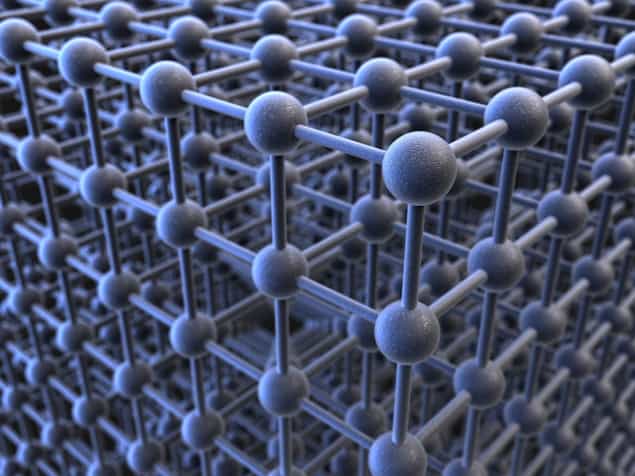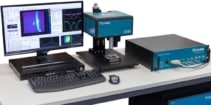
Thousands of scientists will be gathering in Boston, US, next week for the Fall Meeting of the Materials Research Society. With freezing temperatures on the horizon, There will be plenty of time to size up the latest equipment for materials characterization and analysis. Here are a few of the highlights.
Integrated Hall solution speeds up measurement
Lake Shore Cryotronics will be demonstrating an all-in-one instrument for complete Hall analysis at Booth 401. Ideal for semiconductor material research, the company says that the MeasureReady M91 FastHall measurement controller is faster and more accurate than traditional Hall solutions, while also being easier to use.
 Combining all the necessary Hall measurement system functions into a single instrument, the M91 automatically executes measurement steps, collecting the data and calculating the final Hall and mobility parameters. By automatically optimizing the excitation and measurement range, the instrument eliminates manual trial-and-error steps and ensures that measurements are always made under optimal conditions for the sample.
Combining all the necessary Hall measurement system functions into a single instrument, the M91 automatically executes measurement steps, collecting the data and calculating the final Hall and mobility parameters. By automatically optimizing the excitation and measurement range, the instrument eliminates manual trial-and-error steps and ensures that measurements are always made under optimal conditions for the sample.
Most commonly measured materials can be analysed within a few seconds, including those with low mobility. Such speed of measurement is enabled in large part by Lake Shore’s patented FastHall technology, which eliminates the need to reverse the magnetic field during the measurement. This is particularly beneficial when using superconducting magnets, which are relatively slow at completing field reversals.
You can find out more about the M91 at Booth 401, along with Lake Shore’s full range of measurement and control solutions for low-temperature and magnetic-field conditions.
Integrated time controller delivers picosecond precision
The ID900 Time Controller from ID Quantique combines the functionalities of a time-tagger, delay generator, pattern generator, counter and discriminator in a single device. It forms the central hub in a system for fluorescence lifetime NIR spectroscopy with one of ID Quantique’s single-photon detectors.
![]() The time controller has four inputs and four outputs that are interconnected internally via a fast FPGA. Its high-speed mode allows fast count rates up to 100 Mcps on each channel with a binning of 100 ps, while the high-resolution mode has a binning of 13 ps and allows a maximum count rate of 25 Mcps on each of the four channels.
The time controller has four inputs and four outputs that are interconnected internally via a fast FPGA. Its high-speed mode allows fast count rates up to 100 Mcps on each channel with a binning of 100 ps, while the high-resolution mode has a binning of 13 ps and allows a maximum count rate of 25 Mcps on each of the four channels.
The ID900 comes with a clear and simple interface for controlling, monitoring and analysing the parameters for histogram generation, timestamping and delay generation. A configuration editor also allows the user to create customized features such as coincidence filtering or even conditional outputs. It is available in three versions that each offer different add-on functionalities.
Find out more about the ID900 time controller by visiting ID Quantique at Booth 725.
Next-generation microscope incorporates quantum metrology
The quantum scanning microscope (QSM) from QZabre is the first turnkey instrument on the market to exploit a nitrogen-vacancy centre (NV) – a single atomic defect in diamond – as a highly sensitive magnetic-field sensor. Scanning NV technology provides quantitative data on magnetic fields at the nanoscale, and can be used to sense static and dynamic magnetic fields, as well as microwave fields and current densities, and even temperature, subsurface metal or proteins and larger magnetic molecules.
 The heart of the instrument is a diamond scanning probe with a single NV at its apex. The tip, which is made from high-quality single-crystal diamond, is shaped to deliver maximum sensitivity, and is attached to a tuning fork for height feedback. Spatial resolution and magnetic sensitivity depend on the diamond tip, with typical values currently 30 nm and 1–10µT/√𝐻𝑧 respectively, and QZabre believes that these numbers will fall with further innovation.
The heart of the instrument is a diamond scanning probe with a single NV at its apex. The tip, which is made from high-quality single-crystal diamond, is shaped to deliver maximum sensitivity, and is attached to a tuning fork for height feedback. Spatial resolution and magnetic sensitivity depend on the diamond tip, with typical values currently 30 nm and 1–10µT/√𝐻𝑧 respectively, and QZabre believes that these numbers will fall with further innovation.
The microscope delivers closed-loop scanning with a range of 90 µm x 90 µm, and coarse movement with position feedback over an area of 6 mm x 6 mm. A robust design enables stable scanning with minimal drift for long time periods, while an intuitive software interface simplifies and automates many of the complex underlying processes.
To discuss how the QSM can help your specific application, visit QZabre at Booth 810.




